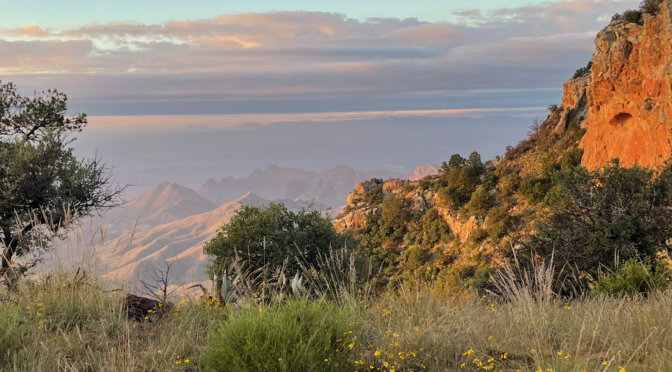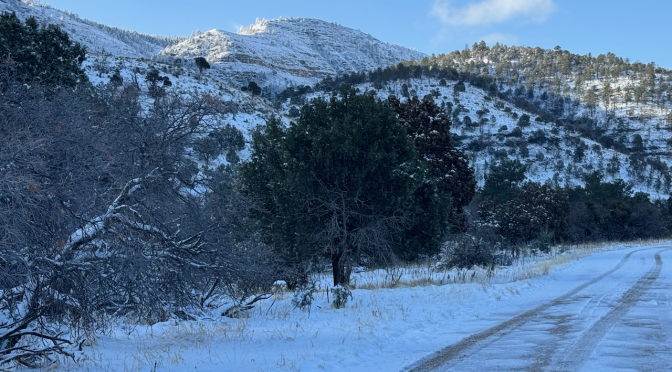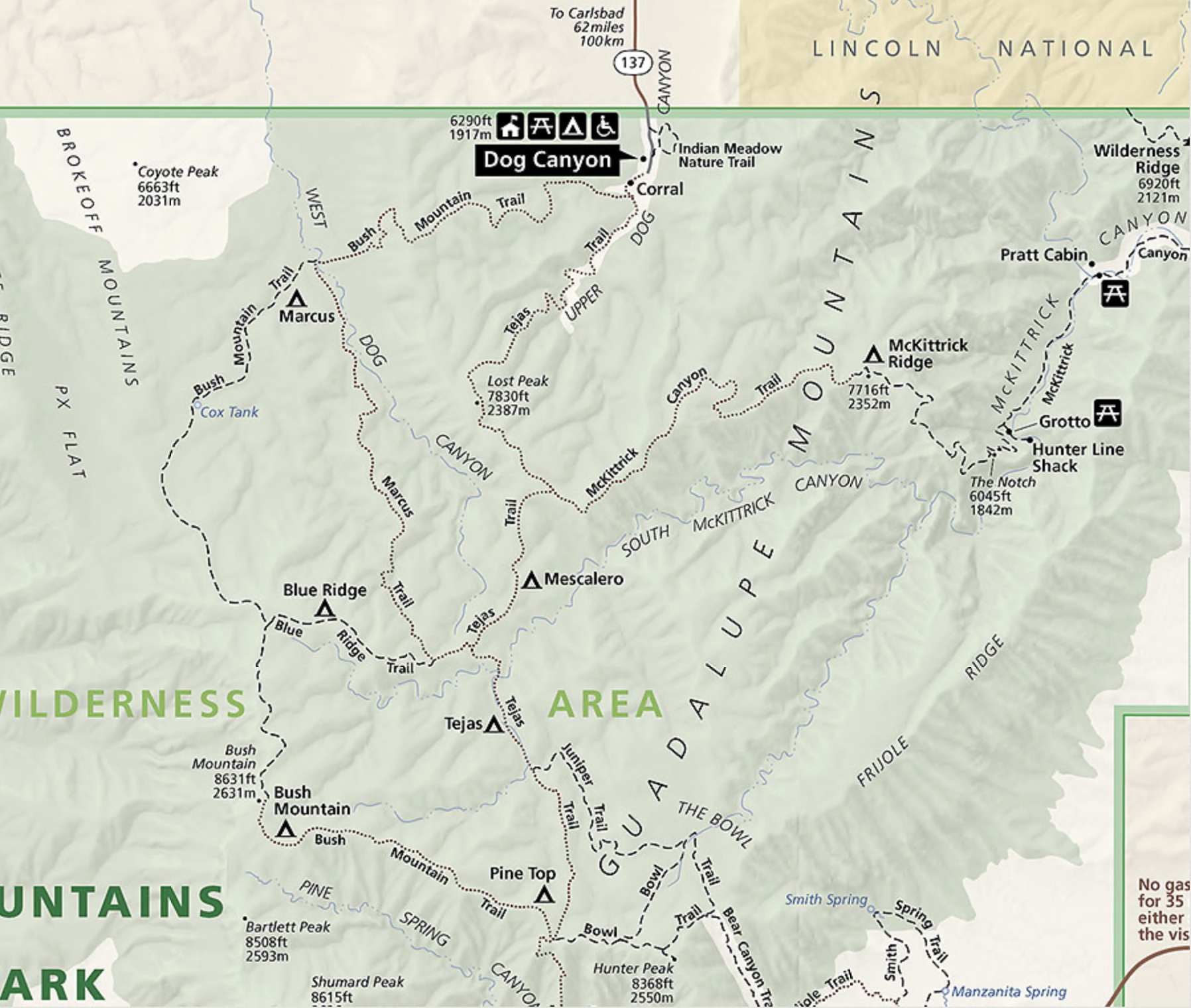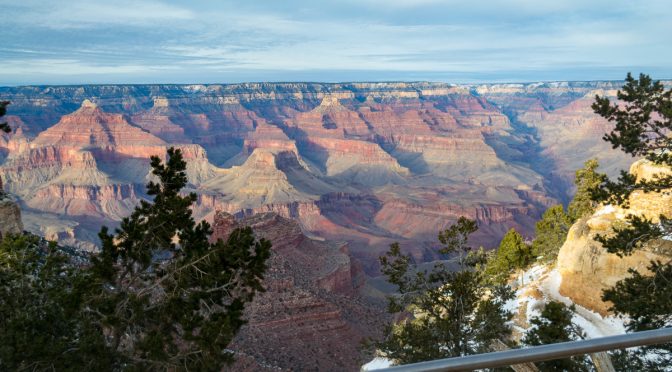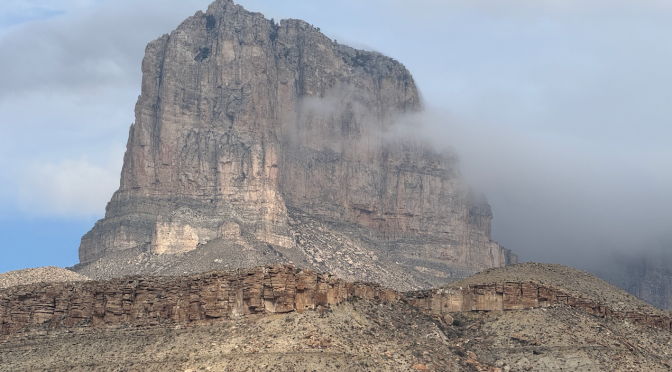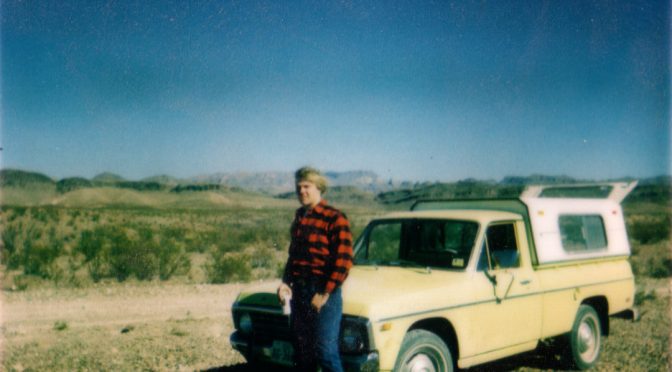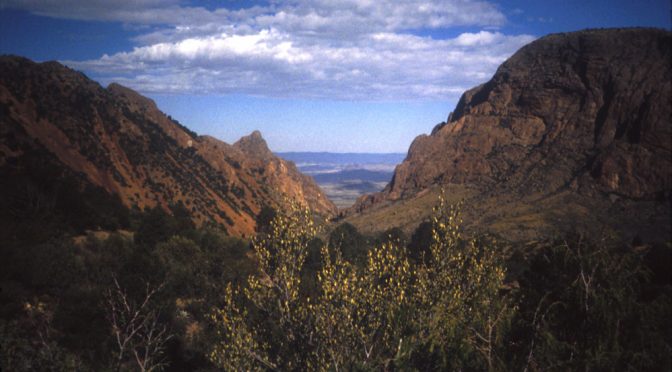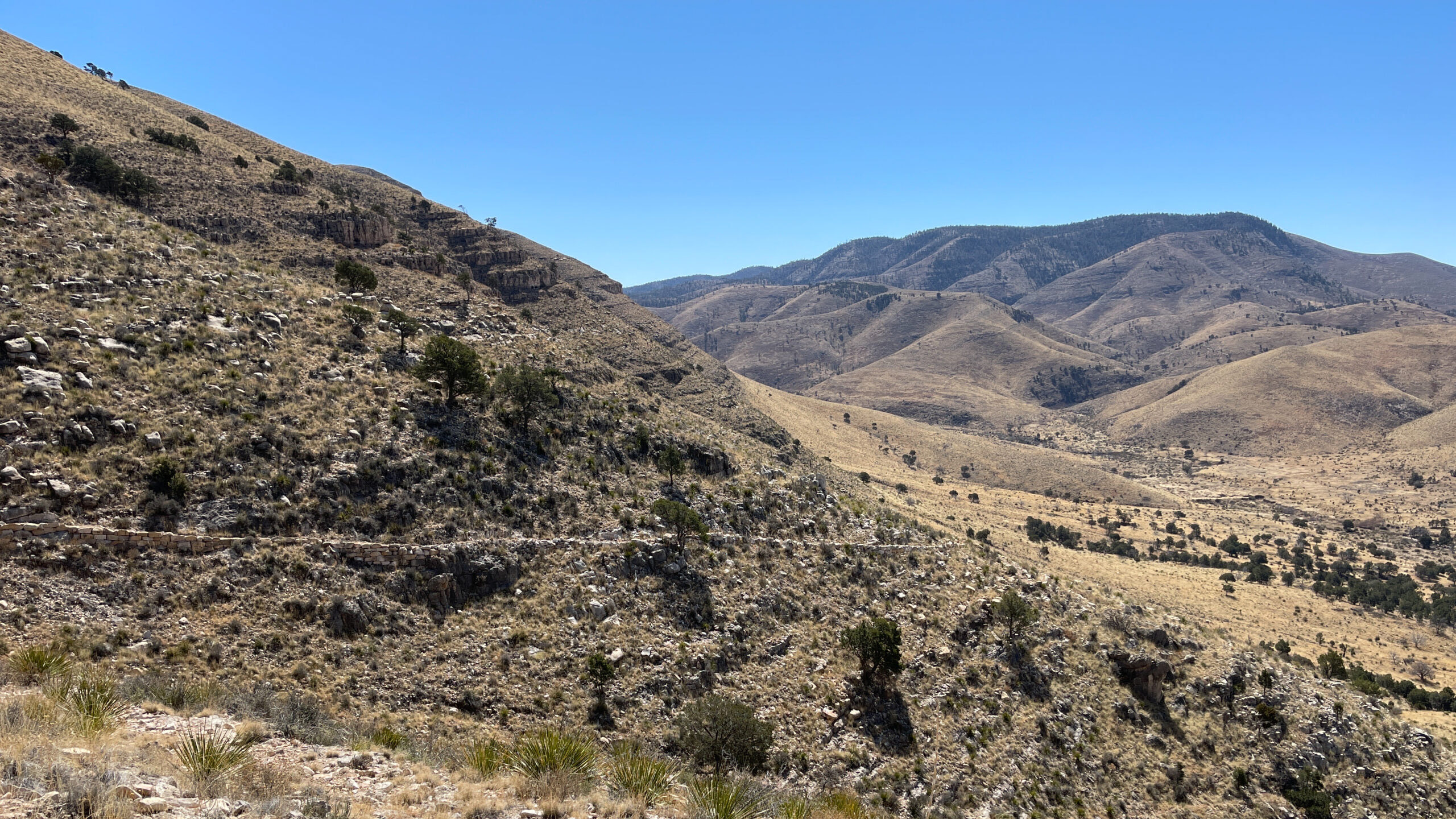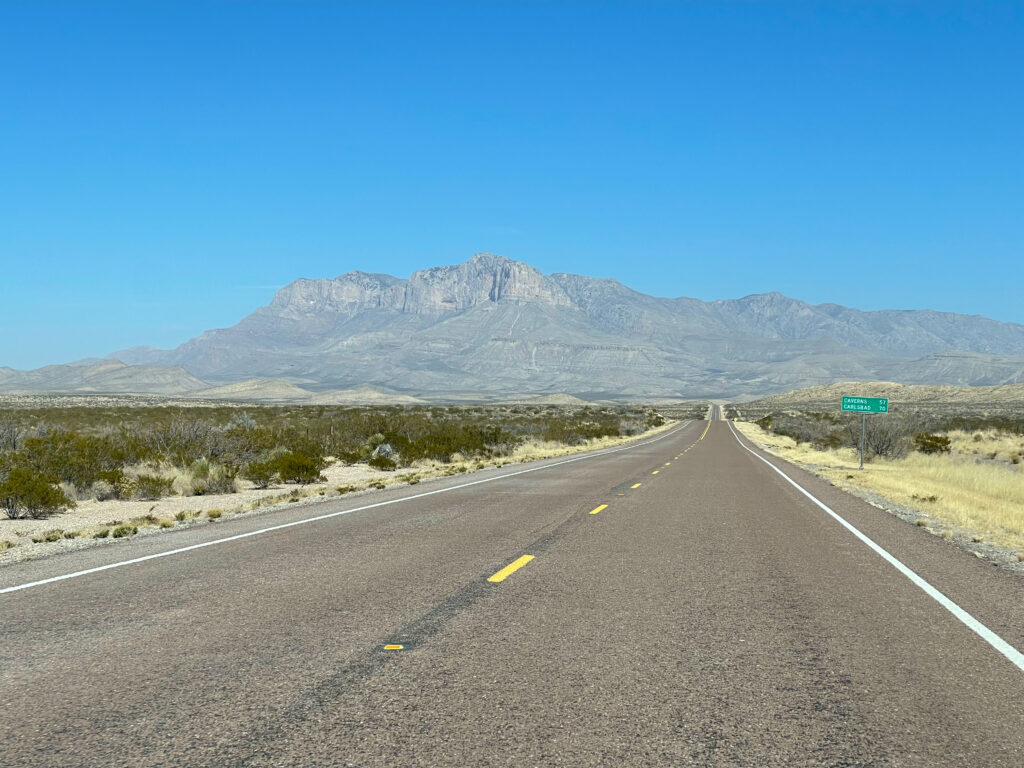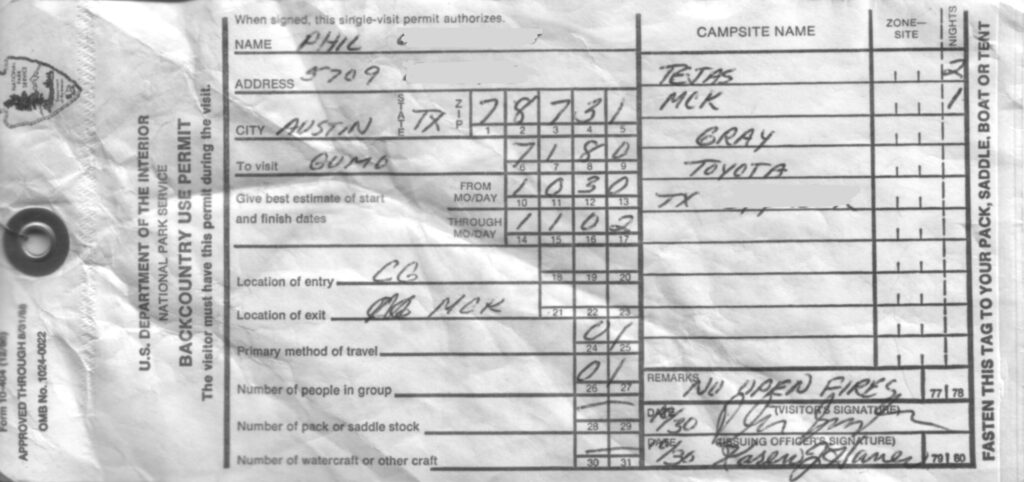One night Seminole Canyon State Park; in Big Bend National Park two nights Cottonwood Campground, one night backpack to NE4, two nights Paint Gap 4
- Seminole Canyon State Park: Camping 10/15/22
- Big Bend National Park
- Camping: Cottonwood Campground BBNP 10/16/22–10/17/22
- Backpack East Rim 4: 10/18/22
- Camping: Paint Gap 4 10/19/22–10/21/22 | Flickr album
One characteristic of aging is that you can get great pleasure from revisiting experiences of your youth. Separated by decades, you forget the details of such experiences but recall that you enjoyed them immensely. In my case this holds true not only for books but also for my outdoor experiences. Going back decades later over trails previously trodden can be as full of joy and discovery as it had been the first time.
With this in mind I wanted to do an overnight to the South Rim, including the East Rim (which I don’t believe I’d been on before). I took advantage of online camping reservation systems and I booked a trip for October 15–21, starting with Seminole Canyon State Park and ending with three days at Paint Gap 4, probably my favorite primitive site in Big Bend National Park. In between was an overnight to ER4 (East Rim #4), a backcountry site on the Rim in the Chisos Mountains. My last backpack in the Chisos had been, I think, 1999. My last trip to the South Rim had been a day hike with friends in January of 2009, and I don’t know that I’d ever been to the east rim side as it’s seasonally closed for the Peregrine Falcon. (My first South Rim hike had been as a nine-year-old with my family in 1968.)
Continue reading TR-BBNP Backpack Northeast Rim (and more)-October 2022